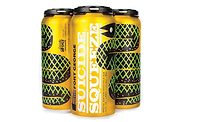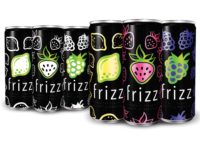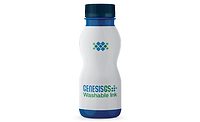The popular saying, “what matters most is on the inside,” might be the case for most things, but in the world of packaging, what is on the outside really does matter. The packaging of any product is the first thing in which consumers see and identify.
A May 7 Insights published by New York-based Nielsen titled, “Four Design-Driven Trends Sweeping the Adult Beverage Category,” found that 68 percent of millennials have purchased a product based solely on its visual design and 45 percent of older consumers have done the same.
“Traditionally, packaging was developed and used for purely functional purposes, including the transport, storage and protection of everyday goods. Today, we live in a different world where packaging facilitates communication, advertising, branding, security and drives sales, in addition to all of its functional purposes,” says Tony Renzi, vice president of product management liquid inks for North American Inks at Sun Chemical, Parsippany, N.J.
Patrick Edson, chief marketing officer at Chromatic Technologies Inc. (CTI), Colorado Springs, Colo., also recognizes the new demand for consumer experience packaging. “As brands focus on a pipeline of ideas and building ‘theater-in-the-hand,’ they need help in stretching the idea, chemistry and inks across all packaging formats,” Edson says.
“The days of an idea only being presented on one packaging format are over,” he continues. “Brands need technology that works on all of their business. It’s counterintuitive, but if we want to sell more cans, we need to sell ideas and technology that will also grow cups, bottles and multi-packs.”
Augmented packaging
In a market full of products, brand owners must weed through the clutter to stand out, and inks and coatings are helping them do just that.
“Inks and coatings can enhance a consumer’s involvement with the beverage package,” Sun Chemical’s Renzi says. “To help differentiate a product so that it stands out on the shelf, beverage packaging can be enhanced by adding a variety of special effects coatings. Items such as glitter, pearl or metallic coatings combined with contrasting matte and gloss effects provide visual contrast, stimulation and differentiation.
“For example, Sun Chemical offers a wide range of coatings that can take on a unique metallic tone through its SunInspire Metallics. Using bright ‘mirror-like’ silver and gold coatings and effects can separate a package from the other competition on the shelves,” he continues. “Newer pigmented coatings can yield a color-shifting effect that changes color depending on the angle of the view. This is very enticing to customers as they pass down a shopping aisle and the package seems to morph as they pass the display.”
Brand owners are turning to inks and coatings to help elevate their beverage packaging. In fact, today’s shoppers want an experiential buying experience, so brand owners are turning to packaging that appeals to the senses and really stands out on the shelf, Renzi says.
CTI’s Edson notes the explosion of innovations within the inks market that give consumers the brand experience they demand, such as an ink that reacts to different temperatures, sunlight activated inks, thermochromic tabs, crowns and closures, reveal inks, demonstration inks, as well as security options. Reveal inks also are popping up in the market. “Reveal inks are a breakthrough for beverage packaging — a brand, for the first time, can now reveal a message or code during consumption,” Edson explains.
Edson also pinpoints a new trend in can packaging: windows. “The focus in cans will be on using new color technology to ‘cut a window’ in the can to romance the product inside,” he says. “For example, a glass filling with beer or orange soda.”
Experts note the use of thermochromic inks continues to broaden. Used on labels and packaging to create a color change when cooled, thermochromic inks can be directly applied onto a variety of substrates to indicate the ideal temperature of a variety of beverages, or they can be used as a promotional message that appears at a specific temperature, Sun Chemicals’ Renzi says. Thermochromic inks also can be used as an added security solution for consumer verification, he adds.
CTI’s Edson describes thermochromic inks as “the holy grail” for brands that are using packaging to create a “theater-in-hand” experience that dramatizes a brand benefit or brand positioning. “Chemistry that alerts, protects and surprises on the package is where brands are focused. Inks and coatings are the vehicle that delivers chemistry,” he says.
Edson also identifies the importance of using universal packaging materials. “Brands seek specialty ink technology — thermos, photo or glow-in-dark — and want it to work across all of their packaging platforms,” he says. “Offering a beverage company an idea that works on 20 percent of their business, but can’t be replicated on the other 80 percent is of limited value.”
He notes that CTI’s strategic advantage is creating a single-source of technology that can be implemented across all packaging formats (metal, paper and plastic).
Sun Chemical also offers a wide-ranging portfolio of printing options. Renzi explains that with product ranges across water-based, solvent-based and UV-cured flexo inks, these solutions must cover a comprehensive application base such as labels, flexible packaging, paper packaging, shrink sleeves, folding carton, etc. Because of performance attributes like heat-resistance, water-resistance, high adhesion or flexibility, an assortment of coatings, varnishes and adhesives can be used to complement the inks being used, he adds.
In conjunction with packaging that appeals to the senses, beverage companies also are developing anti-counterfeiting inks and coatings to minimize the threat of fabricating labels. Sun Chemical helps reduce that threat with brand-protection solutions, or taggants, which are manufactured as part of the ink and only are visible or detectible through sophisticated handheld readers, Renzi explains. “Sun Chemical’s taggant solution plays an important role in identifying a fake and can help secure and authenticate brand packaging,” he says.
Other technological advances, like LED bulbs, have helped further the capabilities of inks and coatings. Renzi explains that printers are always exploring new ways to reduce costs and meet their sustainability initiatives. “To achieve these goals, we’re seeing some printers switch from UV mercury bulbs to LED-curing bulbs for their energy needs,” he says.
Using LED bulbs results in minimal heat transfer, saves on energy costs, eliminates the need for exhaust and generally is more efficient than UV mercury bulbs, he notes. With that advancement, Sun Chemical developed a new line of UV LED inks designed for a folding carton, paper and film used for in-mold labels that deliver the key requirements a brand is looking for — from compliance to low migration standards to shelf standout, color accuracy and more, the company says.
In addition to the functional benefits of inks and coatings, they also enable packaging to stand out from the crowd, which always has been an important quality that brand owners demand from their packaging, Renzi says.
CTI’s Edson thinks two motives will drive the inks and coatings industry in the next five years: creating in-the-hand brand experiences and stretching that experience across every consumer touch point. BI






Report Abusive Comment